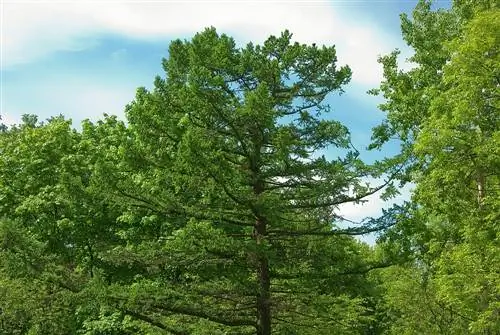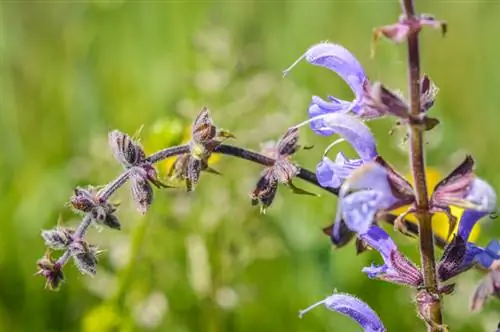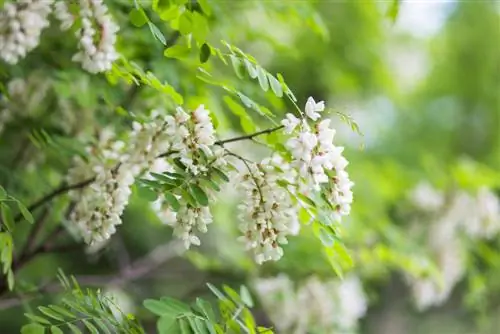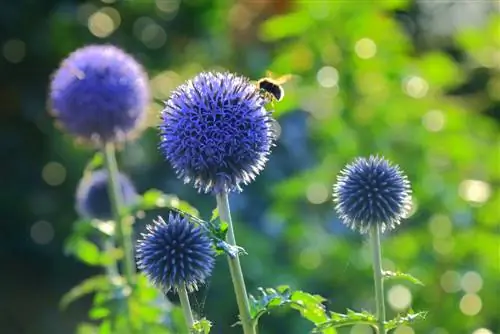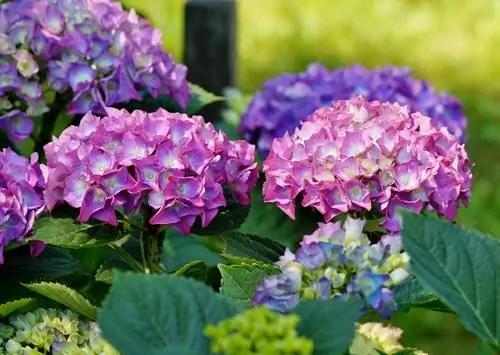- Author admin [email protected].
- Public 2023-12-16 16:46.
- Last modified 2025-06-01 06:02.
The larch is a typical conifer and yet it also has a few peculiarities. There is a lot of surprise in it that is not always apparent at first glance. Starting with colorful flowers and ending with the hardest wood in the conifer family.
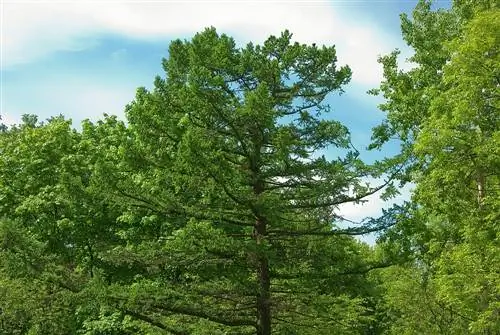
What are the main characteristics of a larch?
The larch (Larix) is a deciduous conifer that occurs in 10 to 20 species. Typical characteristics are their conical growth with a height of 30-50 m, a lifespan of 200-800 years, shedding needles in autumn, colorful flowers and hard, weather-resistant wood.
Name and species
The larches, bot. Larix, are a separate genus of plants from the pine family. Depending on the source, the genus includes 10 to 20 species. The most famous ones in this country are:
- European larch - Larix decidua
- Siberian larch - Larix sibirica
- Japanese larch -Larix kaempferi
Origin and distribution
The European larch is native to us and has its main distribution area in the Central European high mountains. The origin of the other two species can be seen from their names. They have now become native to us and are an established, albeit small, part of the tree population.
Growth and age
The three larch species mentioned above differ slightly in growth and age. These are the key details:
- Growth height 30 to 50 m
- Age: 200-400 years
- sometimes also 600-800 years
- slender, conical crown
- it becomes more expansive with age
- young bark is smooth and gray
- later thick, flaky and reddish brown
- Heart root system of deep and shallow roots
Needles
The larch is one of the two species of coniferous trees that shed their needles in autumn. This is why it is also called a deciduous tree.
- 20 - 40 needles, arranged in rosettes in clusters
- Needles are narrow, flattened and blunt
- first light green, later dark green
- soft and pliable
- Length: 10 to 30 mm
Flowers
The larch takes 15 to 40 years before it produces flowers for the first time. Even in the period that follows, the tree always blooms several years apart. Flowering time is March to May.
- male flowers are yellow-gold and egg-shaped
- they are between 5 and 10 mm long
- female flowers are ovate and somewhat elongated
- 10 to 20 mm long and standing upright
- they are pink to red, turn green in autumn
Fruits and seeds
After flowering, the seeds need a year to mature and sprout. The cones themselves remain on the tree for about 10 years.
- 4 mm long seeds with wings
- the cones are light brown and egg-shaped
- Length is 2.5 to 4 cm
- Width is 1.5 to 2 cm
Propagation
Larch is propagated via seeds or cuttings approx. 30 cm long.
Location requirements
The larch is hardy down to -40 °C and survives even icy winters. It requires the following conditions:
- Sun to partial shade
- loamy, moist, acidic to slightly alkaline soil
- enough space for the strong roots
Diseases and pests
- Gray larch moth
- Larch Crab
- Gray horse
- Larch degeneration
- Larch Shake
Usage
The larch tree is a good source of wood. The wood is hard and weather-resistant. It is suitable for both load-bearing structures and outdoor use.
The larch usually stands as an attractive solitary tree in parks and gardens.
Toxicity
Larch is not poisonous. The young shoots can even be prepared as tea. The larch also has healing ingredients that are used in numerous medicinal preparations.

